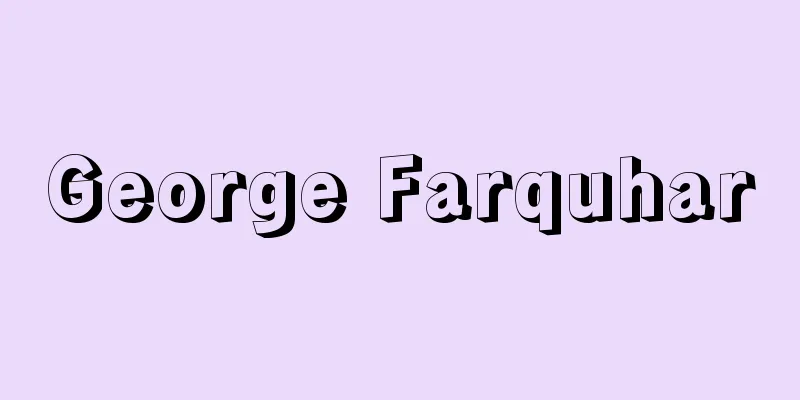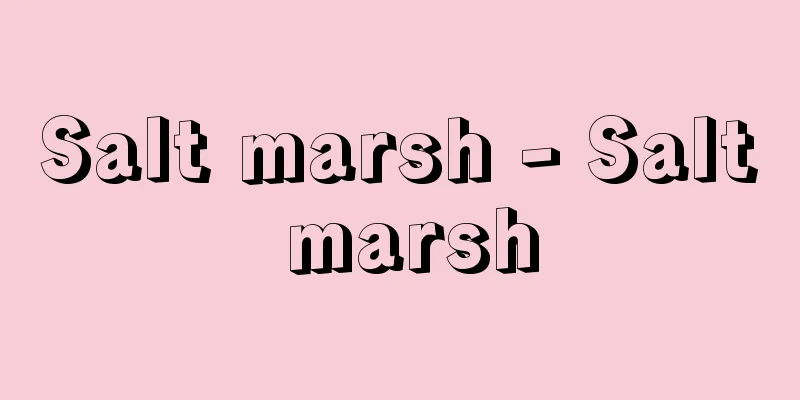Iceland - Republic of Iceland (English spelling)
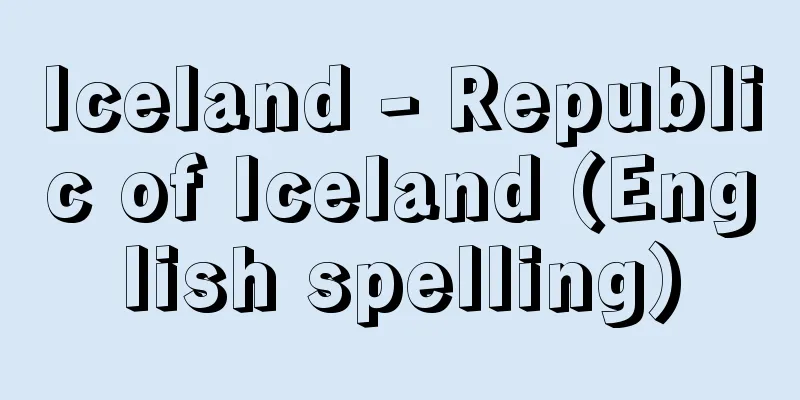
|
A republic located in the northern part of the Atlantic Ocean, west of the Scandinavian Peninsula. It is an island nation. Its official name is the Republic of Iceland, and its English name is the Republic of Iceland. Its area is 103,106 square kilometers, roughly the size of Hokkaido and Shikoku combined. Its population is 317,630 (2010 census), and its population density is low (3.1 people per square kilometer). Approximately 80% of people over 18 years of age are Lutheran Protestants. The capital is Reykjavík. Approximately 40% of the population is concentrated in the capital, and about two-thirds of the total population is concentrated in the seven cities surrounding the capital. The northern city of Akureyri is the second largest city. The standard of living and education is high. As the tourist slogan describes it as "the island of fire and ice," the coexistence of disparate elements such as glaciers and volcanoes and the lack of any trees that could be considered trees create a unique landscape. The official language is Icelandic, but English is widely spoken. Icelandic belongs to the North Germanic language family and is close to Norwegian, Swedish, and Danish, and 1000 years ago they were the same language. It is the language in which Norse mythology and the prose literature sagas (Icelandic sagas, a collection of stories written in the early Middle Ages) were written. As an island nation, there has been relatively little linguistic change, and even modern people can read and understand classical literature. It is also a valuable research resource for linguists. The national flag features a red and white Scandinavian cross, with a cross shifted to the left on a blue background. The blue represents the ocean, the red represents fire, and the white represents ice or snow. It was established in 1915 as the flag of Iceland, a Danish colony, but with independence in 1944, it was re-established as the flag of the Republic of Iceland. The national emblem was also established in 1944, and represents the country with the bull, eagle, dragon, and giant, the traditional guardians of the country's four regions, positioned in the areas they each protect. The national anthem, Lofsöngur (meaning "Hymn"), had words by Matthias Jokumsson and music by Sveinbjörn Sveinbjörnsson, but is not widely known because its content is too religious. [Mitsuko Otsuka] Nature and GeographyThe most striking feature of Iceland's nature is its barrenness and beauty. Although it is a volcanic island, 11% of the country's land area is covered by glaciers, and it borders the Arctic Circle to the north. 79% of the country's land area is made up of glaciers, lakes, and barren lava areas, with only 1% of the land being arable, and about 28% being used as pastureland for sheep and horses. Historically, the country has repeatedly suffered major disasters called Joklahlaup (meaning running glacier), in which a volcano beneath a glacier erupts and the glacier melts. To the south of Iceland's largest glacier, Vatna (Vatna) Glacier (Jokull), repeated eruptions have created a barren area called Sandur (desert), through which countless rivers flow with no clear direction. The eruption of April 14, 2010, is still fresh in our memory. A volcano beneath the Eyjafjallaj glacier in southern Iceland erupted, and the volcanic ash contained in the resulting smoke could affect aircraft engines, making flight operations difficult and paralyzing airports in 28 European countries, with many of them being forced to close. Geologically, Iceland is located on the Mid-Atlantic Ridge, which is the boundary between the North American and Eurasian plates, and is a rare place where the ridge is visible on land, where you can see the land expanding northwest and southeast at a rate of a few millimeters per year, with a long series of valleys (cracks) at the top of the ridge as the boundary. These cracks are commonly known as "cracks in the earth" and are called gjá in Iceland. They have a unique rock surface and can be easily observed around Þingvellir, a World Heritage Site. Iceland is located in the path where the warm Gulf Stream flows into the Arctic Ocean, so the temperature is high despite its high latitude (63-66 degrees north). The average temperature in the capital Reykjavik is 12.5°C in July and -0.2°C in January, which is not much different from the winter temperature in Akita, Japan (average temperature -0.7°C), but heating is sometimes necessary even in summer. Most heating is done using geothermal energy, and Reykjavik is one of the cities with the cleanest air in the world. In winter, the temperature does not drop much, but the wind and rain are strong. The country is a treasure trove of birds, but no snakes live there. There are trees, but nothing that could be called a forest. This is because the harsh winter winds inhibit tree growth, preventing them from growing taller. Along the coast, there are numerous fjords (narrow inlets and bays created by glacial erosion) and U-shaped valleys carved by glaciers. Famous volcanoes include Hekla, Katla, and Laki. Surts Island, named after Surt, the fire god in Norse mythology, emerged from an undersea volcanic eruption in 1963 and was designated a World Heritage Site (natural heritage) in 2008. There are also many hot springs, and the geysers Geysir, which are no longer erupting, became the origin of the common noun geyser in English. There is also a vast open-air hot spring, the Blue Lagoon, near Keflavik Airport. The highest peak is Hvannadalshunyukur (2,110 meters above sea level) on the Vahtnaj Glacier in the southwest. [Mitsuko Otsuka] historyUntil the early Middle Ages, Iceland was uninhabited. There is evidence that Irish monks lived in seclusion around the 8th century, but settlement began with the migration of people, mainly from Norway, as part of the so-called Viking activities. Traditionally, the "Colonization Period" is from 870 to 930. The first settler is said to have been Ingólfur Altnason. He is said to have wintered in the current capital, Reykjavik. Icelanders have a significant amount of Celtic blood as well as Germanic blood, which can be seen in their names and appearance, but the main reason is that the colonists brought people from Scotland and Ireland with them. The sagas tell us that the colonists hated the oppression of the Norwegian king and migrated in search of freedom and independence. The Alþingi parliament, a parliament of all free men, which was established in 930, is said to be the oldest democratic parliament in the world, and its seat, Thingvellir (meaning Parliament Plain), is designated as a World Heritage Site (cultural heritage). The Alþingi was held once a year in mid-June, bringing together people from all over the island. It had legislative and judicial powers, but no police powers. In 985, Eric the Red (Eirikur) discovered Greenland, and thereafter people from Iceland also settled there. In 992, Eric's son Leif came to North America and called it Vinland (land of grapes). The remains of the land were discovered in eastern Canada, and in 1930, a statue of Leif was presented to Iceland by the United States as a tribute to him for discovering North America 500 years before Columbus. There is debate about the historical veracity of the colonization, discovery of North America, politics and trials in Iceland, and conflicts between people, but the Icelandic Sagas provide detailed information. Many of the early settlers worshipped the gods of Norse mythology, but they were forced to convert to Christianity by the Norwegian king, and in 999 or 1000, Christianity was made the state religion in Althingi for political reasons, and the Latin alphabet was also introduced at the same time. The period from 930 to 930 was known as the "Golden Age" of the Old Republic, and literature flourished. In the 13th century, Norway's intervention in Denmark intensified, and in 1241 the great statesman and man of letters Snorri Sturluson (1179-1241) was assassinated. In 1262 Denmark effectively became a Norwegian colony, losing its vitality as a country. At the end of the 14th century, Denmark came under the control of Denmark along with Norway due to the Kalmar Union. After that, the country was devastated by epidemics of the plague (1402, 1494, 1707) and there was nothing culturally worth seeing. In the 19th century, Jón Sigurðsson (1811-1879) led an independence movement, and in 1874, under Danish rule, a constitution was approved and an autonomy law was enacted. In 1918, Denmark gained independence as a personal union with Denmark (an autonomous domain under the Danish monarchy). In 1944, the personal union was dissolved. Denmark elected a president and launched a republic, restarting as a truly independent country. After the Second World War, Iceland not only achieved political maturity early on, but also became a modern welfare state with growth in both economic production and consumption, and women's participation in the labor market was remarkable. Iceland is also the only NATO member state that does not have its own military, and in 1980 it elected the world's first female president, Vigdis Finnbogadottir. On October 11 and 12, 1986, a meeting between U.S. President Reagan and Soviet General Secretary Gorbachev was held in the suburbs of the capital, Reykjavik, which was the stage for the end of the Cold War. In 1990 and 1991, Iceland was the first country in the world to issue a statement recognizing the independence of the three Baltic states (Estonia, Latvia, and Lithuania). Despite being a small country, it has demonstrated its uniqueness and leadership. It has also been a pioneer in environmental issues. Meanwhile, as the 21st century IT era brings about closer interactions with the rest of the world, the Icelandic economy is being forced to find a new position in Europe, and the financial crisis of 2008-2009 is one manifestation of this situation. As of 2010, the country is still struggling to restore its banking system, but efforts are continuing both at home and abroad with the aim of joining the EU. [Mitsuko Otsuka] PoliticsPolitical System/GovernmentIceland is a parliamentary republic, with a unique political system that is a mixture of parliamentary and presidential systems, and together with Finland, it is sometimes called a dual parliamentary system. The Icelandic Constitution gives the President great discretion (appointing the Prime Minister and Cabinet, concluding treaties, signing bills passed by Parliament, bills becoming law with the President's signature), and executive power belongs to the President, but these are formal powers and the President has little room to actually exercise them, and is basically similar to the ceremonial role played by the Head of State (King) in a constitutional monarchy. The President is elected by direct popular vote, and serves a four-year term. There is no provision prohibiting repeated re-election. As of June 2017, the President is Guðni Thorlacius Jóhannesson (1968-; in office 2016-), who is in his first term. The parliament, Alþingi, has a long history dating back to the 10th century. The 1999 election law made it a unicameral parliament with 63 seats. Members are elected from six constituencies and serve a four-year term. Elections are open to all citizens aged 18 and over (voting and eligibility to be elected is 18 and over). As of June 2017, the Prime Minister is Bjarni Benediktsson (1970-; in office 2017-), and the Independence Party, Reform Party, Bright Future, and others form a coalition government. The Prime Minister is the head of the executive branch, and the Cabinet is made up of 12 ministers. The local administration is made up of 26 administrative districts and 78 local municipalities. The judiciary is made up of the Supreme Court, district courts, and a special chamber. In the history of Althingi, no single party has ever held a majority, and as in other Nordic countries, coalition governments consisting of multiple parties have continued. Coalition negotiations are held after each election, and two coalition systems have taken power: a coalition between the right-wing Independence Party and the left-wing Social Democrats from 1959 to 1971, and a coalition between the Independence Party and the centrist peasant party, the Progress Party, from 1995 to 2007. One of the reasons for these coalition governments is the fact that the boundaries between the political left and right are becoming blurred, but another new factor is the conflict between the Social Democrats, Progress Party, and the Civic Movement (established in 2009), which are trying to push for integration with the EU (European Union), and the Independence Party and the Left-Green Movement (established in 1999 in refusal to form the Social Democrats, a political coalition), which choose an isolated path. As of 2010, the government is facing three issues: (1) defense policy (whether or not to join NATO), (2) European integration (whether or not to join the EU), and (3) whether or not to expand fishing restrictions, as well as (4) the issue of improving the status of women. [Akiko Tsukamoto] Defense and Foreign RelationsIceland, which claims to be a non-nuclear, non-armed nation, has no military force for self-defense apart from a 130-strong coast guard. Until 2006, US troops were stationed at Keflavik military base to monitor the North Atlantic. Since September 2006, US troops have not been stationed there, but as a member of NATO, the agreement (to fight back together if any member state is attacked) remains valid. In 1995, Iceland joined the Council of the Baltic Sea States (CBSS). As of July 2010, it is not a member of the EU due to concerns about the preservation of fishing waters, but the current government is working to join. [Akiko Tsukamoto] economyIn contrast to the high political activity and stable democracy since the 19th century, Iceland's economy was lagging behind Western European countries and stagnated. Historically, excessive food production due to population growth led to the depletion of local soil, and there was a time when emigration to North America was thought to be the only solution. Between 1870 and 1914, 15,000 people emigrated, mainly to Canada. However, with the opening of regular flights to Europe and America in the 1940s, communication with other countries improved and economic activity became more active. In the 1990s, both the banks and the market attracted the attention of international investors and became a target for international capital investment. The rapid spread of the Internet in the early 21st century (it had the highest broadband penetration rate in the world in 2006) connected Iceland to the world more closely than ever before, accelerating the flow of investment expansion, but at the same time, the relatively isolated and stable economy underwent rapid structural changes. The credit crunch that began in 2006 spread quickly around the world, changing the flow of capital, causing foreign investors to flee, leading to crisis for banks with insufficient capital, a fall in the value of currencies, and rapid inflation, plunging countries into a national economic crisis. This is the financial crisis. [Akiko Tsukamoto] TradeDue to its small and undiversified economy, Iceland has been highly dependent on imports for consumption and industry. Its main exports are aluminium and seafood. Historically it has relied on cod and herring fishing, but in 2008 aluminium exports surpassed seafood exports for the first time. Tourism is the third source of foreign currency. Other exports include ferro-silicon alloys, fishing equipment, electrical fishing machinery and pharmaceuticals. The majority of Iceland's exports are to the EU and EFTA (European Free Trade Association, Iceland, Norway, Switzerland and Liechtenstein), followed by the United States and Japan. To date, the United States has been Iceland's largest investor, mainly in the aluminium sector. Iceland became a full member of EFTA in 1970 and concluded a free trade agreement with the EC (European Community) in 1973. Under the agreement that came into force in 1994, capital, labour, goods and services can basically be freely moved and exchanged with EU and EFTA countries. However, since the financial crisis of 2008, capital movements have been primarily restricted by the Central Bank in accordance with the Foreign Exchange Act in order to stabilize and strengthen the national currency, the krona. In 2009, the Central Bank announced a plan to lift these restrictions, and in November allowed the circulation of foreign currency for new investments and krona converted into that foreign currency. New measures have been taken in response to market conditions, and the economic situation is gradually improving. [Akiko Tsukamoto] Financial CrisisIn the mid-1990s, the Icelandic economy was exposed to fluctuations in the global trust market due to the almost complete opening of capital flows to other countries, but continued to grow rapidly thanks to economic reforms, deregulation, low inflation, and low unemployment. However, the crisis began in the spring of 2006 when international financial institutions, including credit agencies, became suspicious of the stability of Iceland's major banks' debts due to their overseas expansion. The following year, 2007, the financial sector was hit hard by the global credit crisis. Icelandic banks were also affected by capital shortages, and the value of the krona began to fall in the first half of 2008, with the inflation rate reaching 12%. The problem was that Icelandic banks could not raise funds in foreign currency on the global market, and had no choice but to rely on their creditor, the Central Bank of Iceland. The current account deficit reached 15-16% of gross domestic product (GDP), and the exchange rate against the dollar fell from 62 krona to 118 krona. High interest rates and an overvalued exchange rate had led to krona-denominated bonds becoming the subject of international speculation, which contributed to the depreciation of the currency as they matured in 2008. With bank debt estimated at 10 times the GDP, the Icelandic government nationalized three major banks, suspended foreign currency transactions, and received a $5 billion loan from the International Monetary Fund (IMF) in November (which included bilateral loans from Scandinavian and other countries). After the cabinet resigned in January 2009, the caretaker government replaced the management of the central bank, the FSA (Financial Services Authority). At the end of 2008, the unemployment rate was 18% and the value of the currency (krona) had fallen by 90%. In October 2009, inflation was 9.7%, the krona had not recovered, and access to foreign capital was limited, but there have been signs of recovery since then. In April 2010, a second letter of intent was sent to the IMF headquarters in Washington, granting an extension of the IMF loan deadline until August 2011. [Akiko Tsukamoto] industryDespite the mounting problems, the long-term outlook is bright. Iceland has abundant hydroelectric and geothermal energy, a livestock industry (sheep, cattle, mink, etc.), and fisheries resources such as herring, cod, and capelin, especially as the coast is a confluence of warm and cold currents, and marine products and processed marine products have played a central role in the country's industry. Minerals include diatomaceous earth, and manufacturing includes preserved fish, food, beverages, cement, bricks, ceramics, and processed metal products. The industrial sector includes hydroelectric power, nitrogen fertilizer, and aluminum. [Akiko Tsukamoto] Cod WarsFor Iceland and its prosperity, fishing, securing fishing grounds, and resource conservation are vital issues, and in the second half of the 20th century, the country repeatedly expanded its exclusive fishing zone. The COD War was a series of disputes over territorial waters between Iceland and mainly the United Kingdom that took place from 1958 to 1976. Ultimately, the United Kingdom made significant compromises with Iceland, and the Cod War ended with Iceland's victory. The reasons for this were that Iceland was a military strategically important location directly below the shortest straight line between Washington DC and Moscow during the Cold War, and that the NATO (North Atlantic Treaty Organization) military base, which was the defense base for Western countries including the United Kingdom against the Soviet Union, was located in Keflavik, Iceland, and that an exclusive economic zone of 200 nautical miles was beginning to be recognized as an international practice. [Akiko Tsukamoto] Whaling IssueThere are debates and struggles over whaling between a small number of whaling countries, including Iceland and Japan, and anti-whaling countries. Iceland had ceased whaling activities since 1989, but began moving towards starting whaling activities again, and withdrew from the International Whaling Commission (IWC) in 1992. It then rejoined the International Convention for the Regulation of Whaling (ICRW) in June 2001, but declared that it would resume scientific whaling in 2003 and commercial whaling in 2006. Iceland was accepted as a full member at the IWC Special Committee in October 2009, but there are ongoing debates over reservations to the commercial whaling moratorium, and even as of 2010, some countries are still reluctant to recognize its membership. [Akiko Tsukamoto] AgricultureThe agriculture and livestock industries have long been run as self-sufficient industries. The main agricultural products are potatoes, barley, tomatoes, turnips, carrots, hay, etc., with little export, and grains, fruits and vegetables are imported. In the livestock industry, sheep, cattle, dairy products, and mink furs (30,000 head) are exported. Horses, pigs, and poultry are all for self-sufficiency. The total export value of agricultural and livestock products, including farmed fish products, tomatoes, cucumbers, and fresh flowers grown using geothermal and spring heat (hot spring heat), is 2.05 billion kronor, which is by no means a large amount. [Akiko Tsukamoto] IndustryIn terms of industry, Iceland is unique in its use of its natural resources and abundant electricity. Industries that manufacture domestically-sufficient products include a chemical fertilizer factory in Gufnaes, near the capital, which uses electricity to improve agricultural productivity, a cement factory that aims to become self-sufficient in cement for civil engineering and construction by using seashells instead of limestone, and a diatomaceous earth refining factory that processes the endless supply of diatomaceous earth at the bottom of Lake Mýa, into an export product. There is also an aluminum electric smelting plant in Strøimsvík, southwest of the capital, and a ferrosilica electric furnace plant in Grundartangi, east of Akranes, both of which are for export. [Akiko Tsukamoto] Resources and EnergyEnergy resources are abundant. Usable hydroelectric energy is estimated at 6 gigawatts, and geothermal energy is said to be 1.5 million gigawatts, but only about one-eighth of the hydroelectric power from rivers is currently being used. In order to eliminate greenhouse gas emissions and dependence on imported oil, a project has been underway since the early 2000s to explore the possibility of a hydrogen-based society. There are no thermal or nuclear power plants. [Akiko Tsukamoto] trafficThere are no railways in the country, and passenger cars, trucks, buses, and coastal ships are the main means of transportation. Keflavik Airport is used by many international flights, including foreign and Icelandic flights, but there are also many domestic flights, with about 20 routes from six airlines, and there are about 10 domestic airports, so charter flights can be used freely, which is a distinctive feature of the country. [Akiko Tsukamoto] societyIn 2005, Iceland's Human Development Index (HDI), an index of life expectancy, knowledge, and standard of living, was ranked number one in the world. As can be seen from this, the country has a high level of education, is a modern welfare state, and has a long tradition of industrial cooperatives. Consumer cooperatives are very active, and since around 1882 they have been producing food, clothing, and shelter, mainly with private capital and labor, running a commercial high school, and conducting rescue operations on the coast and in the mountains. [Akiko Tsukamoto] populationIceland has a small population density of 3.1 people per square kilometer, and four-fifths of the country is uninhabited. The population is concentrated on the coast and in the southwest of the country. The life expectancy is the highest in the world at 79.6 years for men and 83.0 years for women (2008). The population in 2010 was 317,630, and the foreign residents are Polish, Lithuanian, German, Danish, Portuguese, Filipino, etc. (2008). [Akiko Tsukamoto] educationCompulsory education from ages 6 to 16, which corresponds to primary and secondary school, is free of charge. Kindergartens and compulsory education are the responsibility of local governments, but the content of education follows the National Curriculum Guidelines drawn up by the Ministry of Education, Science and Culture. Secondary and higher education from high school onwards is the responsibility of the state, and tuition fees are free in public schools up to university. The adult literacy rate is over 99%. [Akiko Tsukamoto] religionFreedom of religion is guaranteed in Alþingi, and as of 2008 79.1% of the population belonged to the Lutheran Church of Iceland (Þjóðkirkja Íslands). Of the remaining 2.5% belong to the Lutheran Free Church. 8.5% belong to other officially recognized religious organizations, such as the First Baptist Church, Pentecostal and independent Protestant denominations, the Roman Catholic Church, Islam, Buddhism, and the Baha'i faith (a new religion that arose in Iran in the 19th century and has its origins in Shiite Islam). Finally, 7.1% belong to other unrecognized religious groups (such as Judaism). 2.8% do not belong to any particular denomination. [Akiko Tsukamoto] Healthcare and Social WelfareIn 2007, the health care workforce included 11,578 doctors, 2,729 nurses, 327 pharmacists, and 294 dentists. The average annual alcohol consumption per person in Iceland was 53 liters (2007), one of the lowest in Europe. In 2007, Iceland spent 7.6% of its GDP on health care. Social security is established by six laws: (1) the Social Insurance Act, which includes health insurance, pension systems, and disability insurance, (2) the Unemployment Insurance Act, (3) the Living Insurance Act, (4) the Tax Act, (5) the Rehabilitation Act, and (6) the Youth Act. National insurance covers the entire population, regardless of nationality, as long as the person has lived in Iceland for more than six months. The pension system consists of a public pension and 90 private insurance funds. The social compensation system provides fixed amounts of old-age and lifetime pensions regardless of annual income. The amount of pension varies depending on wages and the market, but public pensions are available in full to those who have lived in Iceland for 40 years. The rest vary depending on the period and age. [Akiko Tsukamoto] cultureThe prose sagas, written in the early Middle Ages, are the best known cultural achievements of Iceland. Also written during the same period was a highly skilled form of poetry known as skaldic poetry, and although the names of its poets remain, it is too difficult for modern people to understand and is hardly ever appreciated. It should not be forgotten that Iceland was also the only country to transmit the Norse mythology, the Edda, in written form. Also remaining is the unique book, the Book of Colonization, which includes the names of individual colonists, the lands they colonized, and brief anecdotes about them. After Iceland lost its independence due to Norwegian intervention in the 13th century, creative activity declined, but many copies of the sagas were still written during that time, suggesting that reading was a source of entertainment and emotional support for the people during the long winters. The above-mentioned precious ancient manuscripts of the Edda and other sagas were taken from Iceland to Denmark during the Northern Renaissance, but were gradually returned to Iceland after 1971. Literary activity was also revived along with the independence movement, and in 1955 Halldur Laxness (1902-1998), author of The Independent, became the first Icelandic to win the Nobel Prize in Literature. The tradition of reading as entertainment on long winter evenings dates back to the Middle Ages, and there are many bookstores, with the number of books published relative to the population being one of the highest in the world (1,637 books in 2008). There are 157 newspapers (including five daily newspapers in 2007). Another traditional winter pastime is chess, which is played at a high level. In music, singer-songwriter Björk and the group Sigur Ros, which continues to experiment with new music, are active worldwide. In Iceland, there are exceptions, but traditional names are maintained. In other countries, names are surnames (surnames) used, but in Iceland, they continue to use the unique names of "something of the son of ~" and "something of the daughter of ~". For boys, their name is followed by their father's name followed by -son, which means son, and for girls, their name is followed by -dóttir, which means daughter. For example, the father's name is Jón, and if his son is Johan, Johannsson, and if his daughter is Johanna, Johanna Younsdottir. There are no surnames that last for generations, and the girls' names do not change even after marriage. [Otsuka Mitsuko] Relations with JapanSince their diplomatic relations began in 1956, they have been steadily developing. Both countries opened embassies in 2001. Since 2003, the University of Iceland has opened Japanese language courses, with a considerable number of students taking the course every year, with 44 in 2008 and 63 in 2009. The population ratio is large, with two in 2007 and five in 2008. Compared to that, there are fewer students from Japan to Iceland, with about one per year. There are 86 Japanese in Iceland (2008) and 49 Icelanders (2007). Japan is Iceland's major trading partner, with seafood making up about 90% of exports to Japan. Many of them are halibats and shishamos. Japan exports a lot of automobiles, over 70% of exports to Iceland (all in 2008). Cultural exchange is also relatively popular, and in 2001, the Iceland fair was held in Japan. The 2005 Expo Ai and five Nordic countries were jointly participating in the 2005 Expo, and in 2006, Japanese Noh and contemporary dance were performed in Reykjavik to celebrate the 50th anniversary of diplomatic relations. Government officials also travel around almost regularly. [Otsuka Mitsuko] になったんです。 English : The first thing you can do is to find the best one to do . 43 of the World's Countries (1996, Kokudosha) ▽ Gunnar Carlson, translated by Okazawa Norifu and Kobayashi Hiromi, short history of Iceland (2002, Waseda University Press) ▽ Ofro Petaschon, translated by Okazawa Norifu and translated by Saito Yayoi and Kinoshita Yoshie, New Edition of Nordic Politics (2003, Waseda University Press) ▽ Shimizu Makoto, Steps of Nordic Literature (2009, Modern Books) ▽ Andri S. Magnuson, translated by Moriuchi Kaoru, Resurrect! Iceland Land of Dreams (2009, Nippon Broadcasting Publishing Association) ▽ Iceland Travel Guide (published every year) [Reference Items] | | | | | | | | | | [Complete Material] |"> Iceland flag ©Shogakukan Drawing/Shogakukan Creative "> Iceland location map Located in the southwest of Iceland, the northernmost capital of the world. It is the basis for northeastern Atlantic fishing. Iceland Reykjavik ©Shogakukan "> Reykjavik city A national park that extends mainly in the central tectonic belt, east of Reykjavik. The Exal River flows over the lava plateau. World Cultural Heritage Site "Sinkvetril National Park" (Registered in 2004) Iceland Sinkvetril ©Shogakukan "> Sinkvetril National Park It is known as the site where the Nobori Association "Arsingi" was opened. The cracks on the surface, known as the Gyaw, extend northwest and southeast at an average speed of several millimeters a year. Part of the World Cultural Heritage Site "Sinkvetril National Park" (registered in Iceland, 2004) Iceland Sinkvetril ©Shogakukan "> Armanna Gyaw It is one of the Great Geisil Groups in the southwest of Iceland. It spews hot water every 5-10 minutes. It is a country's most famous tourist attraction. Reykjavik Eastern Iceland © Shogakukan "> Strokhur Geyser One of Iceland's most famous waterfalls, boasting a maximum width of about 70m. This is a large waterfall created by a lava flow, with a maximum drop of about 15m in the first step and about 30m in the second step. The land formed by the appearance of the Mid-Atlantic Ridge at sea, with roughly rough terrain everywhere. Iceland Reykjavik East © Shogakukan "> Gutlfoss (Golden Waterfall) Statue of Ingolbull Altonarson, the first colony of Iceland. The history of Reykjavik began in 874 when he landed here in Iceland. Iceland Reykjavik ©Shogakukan "> Ingolbull Altonarson Statue Source: Shogakukan Encyclopedia Nipponica About Encyclopedia Nipponica Information | Legend |
|
大西洋の北部、スカンジナビア半島の西方に位置する共和国。島国である。正称はアイスランド共和国Lýðveldið Ísland、英語名 Republic of Iceland。面積は10万3106平方キロメートルで北海道と四国をあわせたほどの大きさである。人口は31万7630(2010センサス)で、人口密度は低い(1平方キロメートル当り3.1人)。18歳以上の約8割がルーテル派のプロテスタントである。首都はレイキャビーク(レイキャヴィーク)。人口は首都に約4割、首都を含む周辺の7市に全人口の約3分の2が集中している。北部の都市アークレイリが第二の都市である。生活水準、教育水準は高い。 観光のキャッチフレーズで「火と氷の島」と言い表されるように、氷河と火山という異質のものが共存し、樹木らしい樹木は育たず、特異な景観をつくっている。 公用語はアイスランド語であるが、英語がかなり通じる。アイスランド語は北ゲルマン語族に属し、ノルウェー語、スウェーデン語、デンマーク語に近く、1000年前には同一言語であった。北欧神話や散文文学サガ(アイスランド・サガ。中世初期に書かれた物語群)が書かれた言語である。島国であることからも、言語変化が比較的少なく、現代人でも古典文学を読むことができ、その内容を理解できる。また、言語学者にとっても貴重な研究資料である。 国旗は、青地に十字が左に寄っているいわゆるスカンジナビア・クロスが赤と白で描かれている。青は大海、赤は火、白は氷もしくは雪を表している。1915年にデンマーク領アイスランドの旗として制定されたが、1944年の独立に伴い、改めてアイスランド共和国の国旗として制定された。国章も1944年に制定されたもので、国旗を国に見立てて、国の4地域の伝承上の守護者である雄牛、鷲(わし)、竜、巨人がそれぞれの守護する部分に位置しているものである。 国歌Lofsöngur(「賛美歌」の意)は、詞マッティーアス・ヨクムソン、作曲スベインビョルン・スベインビョルンソンによるが、内容が宗教的すぎるのであまり親しまれていない。 [大塚光子] 自然・地勢アイスランドの自然において、もっとも大きな特徴はその不毛性と美しさであろう。火山島でありながら国土の11%を氷河が占めており、北は北極圏に接している。国土の79%はこの氷河、湖、不毛の溶岩地帯からなり、耕作可能な土地はわずかに1%で、約28%が羊や馬などの放牧地として用いられている。歴史的にも、氷河の下の火山が噴火して氷河が溶けだすヨクラフラウプ(走る氷河の意)という名の大惨事を繰り返してきた。アイスランド最大の氷河であるバハトナ(ヴァトナ)氷河(ヨクル)の南側は、繰り返される噴火でサンドル(砂漠)といわれる不毛の地が広がり、そのなかを方向が一定しない川が無数に流れている。 2010年4月14日の噴火は記憶に新しい。アイスランド南部のエイヤフィヤトラ氷河下の火山が噴火し、その噴煙に含まれる火山灰が航空機のエンジンに影響を及ぼす可能性があり、運航が困難となってヨーロッパ28か国の飛行場が閉鎖となるなど麻痺(まひ)状態となった。 地質学的には、アイスランドは北アメリカプレートとユーラシアプレートとの境界にある大西洋中央海嶺上にあり、同海嶺が地上に姿を表している貴重な場所で、海嶺頂上部の長く連なる谷(割れ目)を境に、大地が年間数ミリメートルずつ北西と南東に拡張していく様子を目の当りにできる。この割れ目は通称「地球の割れ目」といわれ、アイスランドではギャウgjáとよばれる。独特の岩肌を見せており、世界遺産のシンクベトリル(シングヴェトリルÞingvellir)一帯でよく観察できる。 アイスランドは、暖流のメキシコ湾流が北極海に流れ込む通り道に当たるので、高緯度(北緯63~66度)にもかかわらず気温は高く、首都レイキャビークの7月の平均気温は12.5℃、1月は-0.2℃で日本の秋田の冬(平均気温-0.7℃)とそれほど変わらないが、夏でも暖房が必要なときがある。暖房は地熱を利用したものが多く、レイキャビークは世界でも有数の空気のきれいな都市である。冬の気温はそれほど下がらないが風雨が強い。鳥類の宝庫であるが、蛇は生息しない。樹木はあるが、森林というほどのものも見られない。これは、冬の厳しい風のために樹木の成長が抑制され高さが伸びないからである。 沿岸には、多数のフィヨルド(氷河の浸食作用でつくられた狭い入り江や湾)と、氷河が削ったU字型の谷が見られる。有名な火山にはヘクラ、カトラ、ラキがある。また、北欧神話の火の神スルトにちなんで命名されたスルツ島(スルツエイ)は、1963年の海底火山の噴火により出現した島で、2008年に世界遺産(自然遺産)に指定された。温泉も多く、いまは噴出を休止している間欠泉ゲイシルは、間欠泉を表す英語geyser(ガイザー)の普通名詞の語源となった。また、ケプラビーク(ケフラヴィーク)空港の近くには広大な野外温泉ブルーラグーンがある。最高峰は南西部のバハトナ氷河にあるクバンナダールスフニュークル(海抜2110メートル)である。 [大塚光子] 歴史中世初期まで、アイスランドは無人島であった。8世紀ごろに、アイルランドの修道士が隠遁(いんとん)生活をしていたという形跡があるが、定住はいわゆるバイキング活動の一環として、主としてノルウェーから人々が移住したのに始まる。伝統的に、870年から930年を「植民の時代」とする。最初の定住者はインゴルフル・アルトナソンとされる。彼は、現在の首都レイキャビークで越冬したという。アイスランド人には、ゲルマン系だけでなくケルト系の血もかなり流れており、名前やその外見にも観察されるが、植民者がスコットランドやアイルランドを経由し、その地の人々を連れてきたことがおもな原因とされる。植民者はノルウェー王による圧政を嫌い、自由と独立を求めて移住したと、サガに語られている。930年に発足した男子の自由民全員による議会アルシンギは世界最古の民主議会とされ、議会場であったシンクベトリル(議会平原の意)は、世界遺産(文化遺産)に指定されている。アルシンギは年に1回、6月中旬に全島から人々が集まって開催された。立法権と司法権を持ったが、警察権力は存在しなかった。 985年に赤毛のエリック(エイリークル)がグリーンランドを発見し、以後、アイスランドからの植民も行われた。992年に、エリックの息子レイフが北米にわたり、ビンランド(ヴィンランド。葡萄(ぶどう)の地)とよんだ。カナダ東部でその跡地が発見され、コロンブスより500年早い北米大陸発見として、1930年にアメリカ合衆国からレイフの立像がアイスランドに贈られた。植民から北米大陸発見、アイスランドでの政治や裁判、人々の確執等は歴史学的な信憑性(しんぴょうせい)に議論があるが、アイスランド・サガに詳しい。 初期植民者の多くは北欧神話の神々を信仰の対象としていたが、ノルウェー王にキリスト教への改宗を迫られ、999年あるいは1000年、アルシンギにおいて政治的判断からキリスト教が国教と定められ、同時にラテン文字も導入された。930年から約300年間は、古共和国のいわば「黄金時代」とされ、文芸も栄えた。 13世紀になるとノルウェーの介入が強まり、1241年には偉大な政治家で、文学者でもあったスノッリ・ストゥルルソン(1179―1241)が暗殺され、1262年には事実上ノルウェーの植民地となって、国としての活力を失った。14世紀末のカルマル同盟により、ノルウェーとともにデンマークの支配下に入った。以後、ペストの流行(1402、1494、1707)などにより、国は荒廃し、文化的にも見るべきものはなかった。19世紀に入り、ヨゥン・シグルズソン(1811―1879)が中心となって独立運動を展開、1874年にデンマーク支配下で憲法が承認され、自治法が制定された。1918年、デンマークとの同君連合(デンマーク君主下の自治領)として独立を得た。1944年に同君連合を解消。大統領を選出して共和国を発足し、真の独立国として再出発した。 第二次世界大戦後、アイスランドは早くからの政治的成熟に加え、経済的生産、消費ともに成長する近代的な福祉国家となり、女性の労働市場への進出も著しかった。また、NATO加盟国のなかでは唯一自国の軍隊を持たない国であること、1980年には世界で初の女性大統領ヴィグディス・フィンボーガドッティルを選出したこと、1986年10月11日、12日に首都レイキャビーク郊外でアメリカ大統領レーガンとソ連書記長ゴルバチョフの会談が行われ、東西冷戦に終止符が打たれる舞台となったこと、1990年、1991年のバルト三国(エストニア、ラトビア、リトアニア)の独立に際しては世界に先駆けて承認する声明を発表するなど、小国ながらその独自性とリーダーシップを発揮してきている。さらに環境問題についても世界に先駆けた取り組みがある。 一方、21世紀のIT時代に世界との交流がより緊密になるなかで、アイスランド経済もヨーロッパでの新しい位置づけを迫られており、2008年から2009年にかけての金融危機もそうした状況の一つの表れである。2010年時点では、まだ銀行システムの回復に苦労しているが、EU加盟をめざし、国内外に向けて努力が続けられている。 [大塚光子] 政治政治制度・政府アイスランドは議会制共和国で、政治システムは議院内閣制と大統領制が混合した独特の形態をもち、フィンランドとともに二元的議会制とよばれることもある。アイスランド憲法では大統領に大きな裁量権(首相および閣僚の任命、条約の締結、議会で可決された法案への署名、法案は大統領の署名をもって成立)が与えられており、行政権は大統領に属するが、これらは形式上の権限で実際に大統領が権限を行使する余地は小さく、基本的には立憲君主国における元首(国王)が果たす儀礼的な役割に近い。大統領は国民投票による直接選挙で選ばれ、任期は4年。多選を禁止する規定はない。2017年6月時点で、大統領はグドゥニ・トルラシウス・ヨハネソンGuðni Thorlacius Jóhannesson(1968― 。在任2016~ )、1期目である。 立法府である議会アルシンギの歴史は長く、10世紀にさかのぼる。1999年の選挙法により一院制となり、議席数は63。議員は6選挙区から選出され、任期は4年。選挙は18歳以上の全国民による(選挙権・被選挙権は18歳以上)。2017年6月時点で首相は独立党のビャルニ・ベネディクトソンBjarni Benediktsson(1970― 。在任2017~ )で、独立党、改革党、明るい未来等が連立与党を形成している。首相は行政府首長で、内閣は12人の大臣で構成される。地方行政は26行政区と78の地方自治体で構成されている。司法は最高裁判所、地方裁判所、特別院からなる。 アルシンギの歴史において、一政党が単独で多数を占めたことがなく、他の北欧諸国と同じように複数政党による連立(連合)政府が続いている。選挙ごとに連立交渉が行われ、たとえば1959年~1971年には右派の独立党と左派の社会民主党との連立、1995年~2007年には独立党と中道的な農民政党である進歩党との連立という二つの連立体制が政権を担った。こうした連立政府の要因には、政治的な左派と右派の境界があいまいになってきているという事情もあるが、さらに新たな要因として、EU(ヨーロッパ連合)との統合を押し進めようとする社会民主同盟、進歩党、市民運動(2009発足)に対して、孤立的な道を選ぶ独立党、左派グリーン運動(1999政党連合・社会民主同盟結成を拒否して発足)という対立図式がある。2010年時点で、政府は(1)防衛政策(NATO加盟の是非)、(2)ヨーロッパ統合(EU加盟の是非)、(3)漁業制限拡大の是非、という三つの問題に加え、(4)女性の地位向上という問題にも直面している。 [塚本明子] 防衛と外交非核・非武装国家を唱えるアイスランドは、130の強力な沿岸警備隊を除いては自衛軍隊をもたない。2006年まではアメリカ軍がケプラビーク軍事基地に駐屯して、北大西洋の監視にあたっていた。2006年9月以降、アメリカ軍の駐留はないが、NATOのメンバーとして現在も合意(加盟国のいずれかが攻撃された場合には共同して応戦すること)は有効である。1995年、バルト海沿岸諸国評議会(CBSS)に加盟。漁業水域保全の観点から、2010年7月時点ではEU非加盟であるが、現政府は加盟を進めている。 [塚本明子] 経済19世紀以降の高い政治活動と安定した民主主義とは対照的に、アイスランドは経済的には西ヨーロッパの国々からかなり立ち後れ、停滞していた。歴史上人口増加に伴う過度な食糧増産によって地方の土壌の疲弊が進み、北米に移住することが唯一の解決と思われた時代もあって、1870年から1914年の間には1万5000人が、主としてカナダに移住している。しかし1940年代のヨーロッパ、アメリカへの定期便の運航により諸外国とのコミュニケーションもすすみ、経済活動が活発になった。1990年代には銀行も市場も国際的な投資家の注目を集め、国際資本の投資対象となった。21世紀初めのインターネットの急速な普及(2006年にはブロードバンドの普及率世界一)によりアイスランドはこれまでにないほど緊密に世界と結びつき、投資拡大の流れを加速させたが、その一方で比較的孤立し安定していた経済は構造的に急激な変化を被ることになる。2006年から始まった信用危機(Credit Crunch)は瞬(またた)く間に世界に伝わり、資本の流れが変わって外国投資家が逃げ、自己資本不足の銀行が危機に陥り、通貨が下落し、急激なインフレとなって国家的な経済危機に陥った。これが金融危機である。 [塚本明子] 貿易経済が小規模な上に多角化が進んでいないため、アイスランドは消費と産業に関しては輸入に依存するところが大きかった。おもな輸出品目はアルミニウムと水産物である。歴史的にタラやニシンの漁業に頼ってきたが、2008年にアルミニウムの輸出が初めて水産物の輸出を超えた。観光業が第三の外貨獲得の道である。そのほかにはケイ素鉄合金類、漁業装具、漁業用電機器具、薬剤などの輸出がある。アイスランドの輸出の大部分はEUおよびEFTA(ヨーロッパ自由貿易連合、アイスランド、ノルウェー、スイス、リヒテンシュタイン)域内向けで、これにアメリカ、日本が続く。これまで、アイスランドへの第一の投資国はアメリカで、投資対象は主としてアルミニウム関係部門である。 アイスランドは1970年にEFTAの正規のメンバーとなり1973年にEC(ヨーロッパ共同体)との自由貿易協定を結んだ。1994年に発効された合意によって、基本的にはEU、EFTA諸国と自由に資本、労働商品サービスを移動・交換できる。しかし2008年の金融危機以後は通貨クローナの安定と強化のために外国為替法に基づき、中央銀行によって資本の移動が一次的に規制されている。2009年、中央銀行はこの制限の解除案を発表し、11月には新しい投資のための外貨とその外貨にかえたクローナの流通を許可した。市場状況に応じて新たな方策がとられ、経済状況は少しずつ好転している。 [塚本明子] 金融危機1990年代なかばに他国との資本移動がほぼ完全に開放されたことで、アイスランド経済はグローバルな信託市場の変動にさらされることになったが、経済改革、規制緩和、低インフレ率、低失業率などの要因によって急成長を続けた。しかし2006年春、信用機関など国際的な金融機関がアイスランドの主要銀行の海外進出による債務拡大とその安定性に疑義を抱いたことから危機が始まった。翌2007年、金融部門は世界的な信用危機によって大きな打撃を受けた。アイスランド諸銀行も資本不足の影響を受けて2008年前半期からクローナ価が落ち始め、インフレーション率は12%に上った。問題はアイスランド諸銀行がグローバル市場での外貨による資金調達を得られず、債権者であるアイスランド中央銀行に頼るしかすべがなかったという事情である。経常収支の赤字は国内総生産(GDP)比15~16%に達し、対ドル為替レートは62クローナから118クローナに落ち込んだ。高金利を背景に過大評価された為替レートによるクローナ建ての債券が国際的な投機の対象となってきていたが、それらの債券が2008年に満期を迎えるに伴い、通貨の下落を引き起こしたのである。 銀行が抱える債務はGDPの10倍に達したと予測され、アイスランド政府は大手銀行3行を国有化し外貨取引を中止、11月にはIMF(国際通貨基金)から50億ドルの融資(このなかには北欧およびその他の国の二国間ローンが入っている)を受けることになった。2009年1月の内閣総辞職後、暫定政府によって中央銀行、FSA(アイスランド金融サービス機構)の幹部交替が行われた。2008年末の失業率は18%、通貨価格(クローナ価)は90%の下落。2009年10月のインフレーション率(物価上昇率)は9.7%で、クローナ価は回復しておらず、外国資本へのアクセスは限られていたが、その後回復の兆しもみえつつある。2010年4月に第2回目の同意書がワシントンのIMF本部に送られ、2011年8月までのIMF融資期限の延期が認められた。 [塚本明子] 産業山積する問題はあるものの、長期的な展望は明るい。アイスランドは豊富な水力と地熱エネルギー、畜産業(羊、牛、ミンクなど)のほかに、とくに沿岸が暖流と寒流の合流点にあたることもあってニシン、タラ、シシャモなどの漁業資源が豊かであり、水産物、水産加工品が産業の中心的な役割を占めてきた。また鉱物としては珪藻土(けいそうど)、製造業は保存加工魚を中心とした食品、飲料、セメント、レンガ、陶磁器、金属加工品などがある。工業部門では水力発電、窒素肥料、アルミニウムなどがある。 [塚本明子] タラ戦争アイスランドとその繁栄にとって漁業および漁場の確保、資源保全は死活問題で、20世紀後半には漁業専管水域を繰り返し拡大してきた。タラ戦争cod warとは、1958年から1976年にかけて起きたアイスランドとおもにイギリスとの間の領海を巡る一連の紛争のことである。最終的にはイギリスがアイスランドに対して大幅な妥協をし、タラ戦争はアイスランドの勝利で終結したことになるが、その要因としては、東西冷戦下でアイスランドがアメリカのワシントンD.C.とソ連のモスクワを結ぶ最短直線経路の真下にある軍事的最重要地点であり、イギリスを含む西側諸国のソ連に対する防衛拠点のNATO(北大西洋条約機構)軍事基地がアイスランドのケプラビークにあったこと、また国際的な慣習として200海里の排他的経済水域が認められ始めていたことなどがある。 [塚本明子] 捕鯨問題アイスランドと日本を含む少数の捕鯨国と、これに対抗する反捕鯨国との鯨の捕獲をめぐる議論と闘争がある。1989年以降アイスランドは捕鯨活動を中止していたが、ふたたび捕鯨活動を開始に向けて動き始め、1992年にIWC(国際捕鯨委員会)を脱会した。その後、2001年6月に国際捕鯨取締条約(ICRW)に再加盟したが、2003年に調査捕鯨、2006年に商業捕鯨再開を宣言した。2009年10月のIWC特別委員会でアイスランドは正式加盟国として受け入れられたが、商業捕鯨モラトリアムに対する留保権をめぐって議論が絶えず、2010年時点でも、その加盟資格を認めようとしない国もある。 [塚本明子] 農業農畜産業は昔から自給的産業として営まれてきた。おもな農産品はジャガイモ、大麦、トマト、カブ、人参、乾草などで輸出は少なく、穀物、青果などを輸入している。畜産業では羊、牛、酪農製品、ミンク(3万頭)の毛皮などを輸出している。馬、豚、家禽(かきん)はどれも自給用である。養殖魚加工品、地熱・泉熱(温泉熱)を利用して栽培したトマト、キュウリ、生花などを含めた農畜産物の輸出総額は20億5000万クローナだが、決して多くはない。 [塚本明子] 工業工業面ではアイスランド特有の自然資源や豊富な電力を使うなど独創的なものがある。国内自給産品の製造を担う工業には、電力を利用して農業生産力向上を図る首都近郊グブネースの化学肥料工場、石灰石のかわりに海底の貝殻を使って土木建築用セメントの自給を目ざすセメント工場、ミー湖底に無尽蔵にある珪藻土を輸出産品に仕上げる珪藻土精製工場などがあり、首都南西部のストロイムスビークにあるアルミ電気精練工場やアクラネース東方グルンダルタンギのケイ素鉄電気炉工場もともに輸出用である。 [塚本明子] 資源とエネルギーエネルギー資源は豊富である。利用可能な水力エネルギーは6ギガワットと評価され、地熱エネルギーは150万ギガワットといわれるが、まだ河川からの水力は8分の1程度しか使われていないという。地球温暖化ガスの発生と輸入石油依存をなくすため、2000年代初めから水素エネルギーを基礎においた社会(「水素エネルギー社会」hydrogen-based society)の可能性を探るプロジェクトが進められている。火力・原子力発電所はない。 [塚本明子] 交通国内に鉄道はなく、乗用車、トラック、バスおよび沿岸航路の船舶がおもな交通手段である。ケプラビーク空港には外国機、アイスランド機などの国際路線の利用が多いが、6社20路線ほどある国内航空路の利用も多く国内飛行場も10あまりが整備され、チャーター便が自由に使えるのがこの国の特色である。 [塚本明子] 社会2005年のアイスランドのHDI指数(Human Development Index)すなわち寿命、知識、生活水準の指数は世界第1位であった。そこからも読み取れるように教育水準は高く、近代的福祉国家であり、産業別組合の伝統も長い。生活協同組合の活動が活発で、1882年ごろからおもに民間の資本と労力により衣食住各面の生産、商業高校の経営から海岸や山中での救難活動までを行っている。 [塚本明子] 人口アイスランドはヨーロッパでも人口密度が1平方キロメートル当り3.1人と小さく、国土の5分の4は非居住地で、人口は沿岸地域および国の南西に集中している。平均寿命は男子が79.6歳で世界一、女子が83.0歳(2008)。2010年の人口は31万7630人で、外国人居住者はポーランド人、リトアニア人、ドイツ人、デンマーク人、ポルトガル人、フィリピン人などである(2008)。 [塚本明子] 教育小学校、中学校に相当する6~16歳までの義務教育は無償である。幼稚園および義務教育の責任は地方自治体にあるが、教育内容は教育科学文化省の作成する国民カリキュラム指導要綱に従っている。高校以上の中・高等教育は国家の責任においてなされており、国公立は大学まで授業料無償。成人の識字率は99%以上である。 [塚本明子] 宗教信教の自由はアルシンギで保証されており、2008年時点で全人口の79.1%がアイスランドルーテル教会Þjóðkirkja Íslandsに属している。残りのうち2.5%がルーテル自由教会。8.5%が第一バプティスト教会、ペンテコステ派や独立派のプロテスタント諸派、ローマカトリック教会、イスラム教、仏教、バハイ信仰(19世紀にイランで生まれた新宗教で、イスラム教シーア派に起源をもつ)などそのほかの正規に認められた宗教組織に属している。そして7.1%が正式認知を受けていないその他の宗教団体(ユダヤ教など)にあたる。2.8%はとくにどの宗派にも属していない。 [塚本明子] 医療・社会福祉2007年の医療従事者数は、医師1万1578人、看護士2729人、薬剤師327人、歯科医師294人となっている。アイスランド人1人当りの年間アルコール消費量は53リットル(2007)で、ヨーロッパでも最低国の一つである。2007年、アイスランドはGDPの7.6%を医療に支出している。 社会保障は、(1)健康保険、年金制度、障害保険を含む社会保険法、(2)失業保険法、(3)生活保険法、(4)税法、(5)リハビリテーション法、(6)青少年法の六つの法律によって確立されている。国民保険は国民全体をカバーし、6か月以上の居住者であれば国籍を問わない。年金制度は公的年金と90の私的保険資金からなる。社会補償制度によって年収にかかわりなく老齢年金と生涯年金の額は定額である。年金額は賃金と市場によって変わるが、公的年金についてはアイスランドに40年間居住していた者は全額受け取ることができる。そのほかは期間と年齢によって変化する。 [塚本明子] 文化中世初期に書かれた散文の物語群サガが、アイスランドの文化的な達成としてもっともよく知られている。また、同時期にスカルド詩とよばれる非常に技巧的な詩が書かれ、詩人の名前も残っているが、現代人にとっては難解すぎて、鑑賞の対象にはほとんどならない。北欧神話『エッダ』を文書の形で伝えたのもアイスランドだけであることを忘れてはならない。また、個々の植民者の名前と植民した土地、簡単なエピソードをも交えた特異な書物『植民の書』も残っている。 13世紀にノルウェーの介入によって独立を失ったのちは、創作活動は衰えるが、その間もサガの写本が多数書かれ、読書は国民の長い冬の間の楽しみであり、また心の支えとなっていたことがうかがえる。上記の『エッダ』や諸サガの貴重な古写本は、北方ルネッサンスの時期にアイスランドからデンマークに持ち出されたが、1971年以後、徐々にアイスランドに返還された。独立運動とともに文学活動も復活し、『独立の民』を書いたハルドゥル・ラクスネス(1902―1998)が1955年に同国では初めてノーベル文学賞を得ている。 長い冬の夜の楽しみとしての読書の伝統は中世から続くもので、書店も多く、書籍出版数の人口比は世界でも高い(1637冊。2008)。新聞は157紙(うち日刊5紙。2007)。もう一つの伝統的な冬の娯楽はチェスで、レベルも高い。音楽ではシンガーソングライターのビョルク(ビヨーク)、新しい音楽の試みを続けるグループ、シグル・ロスが世界的に活躍している。 アイスランドでは、例外はあるが伝統的な名前を守り続けている。ほかの国々では名前に姓(苗字)が採用されているが、アイスランドではいまも「~の息子の何々」「~の娘の何々」という独特の名前のつけ方をとり続けている。男子の場合には自分の名前に続けて父親の名前の後に息子を意味する-son(ソン)をつけ、女子の場合には自分の名前に続けて父親の名前の後に娘を意味する-dóttir(ドッティル)をつける。たとえば、父親の名前がヨウン(Jón)で、息子の名前がヨハンの場合にはヨハン・ヨウンスソン(Jónsson)となり、娘の名前がヨハンナの場合にはヨハンナ・ヨウンスドッティル(Jónsdóttir)となる。代々続く姓がなく、女子の姓名は結婚しても変わらない。 [大塚光子] 日本との関係1956年(昭和31)に外交関係を開始して以来、順調に発展している。2001年(平成13)に両国がともに大使館を開設した。アイスランド大学には、2003年以来日本語コースが開設され、2008年には44名、2009年には63名と毎年かなりの数の受講生がいる。アイスランドから日本への留学生も2007年には2名、2008年には5名と人口比にすると多い。日本からアイスランドへの留学生はそれに比して少なく、1年に1人程度である。在アイスランド邦人は86人(2008)、在日アイスランド人は49人(2007)である。 日本は、アイスランドにとって主要な貿易相手国であり、水産物が対日本輸出の約9割を占める。ハリバット(かれい類)やシシャモが多い。日本からは自動車の輸出が多く、対アイスランド輸出の7割を超える(いずれも2008)。文化交流も比較的盛んで、2001年には日本でアイスランド・フェアを開催。2005年の愛・地球博には北欧5か国と共同参加、2006年にはレイキャビークで外交関係50周年を祝って日本の能や現代舞踊が上演された。政府の要人も、ほぼ定期的に往来がある。 [大塚光子] 『山室静著『アイスランド――歴史と文学』(1963・紀伊國屋書店)』▽『藤岡謙二郎編『世界地誌ゼミナール4 ヨーロッパ』(1973・大明堂)』▽『谷口幸男訳『エッダ 古代北欧歌謡集』(1973・新潮社)』▽『木内信藏編『世界地理6 ヨーロッパⅠ』(1979・朝倉書店)』▽『谷口幸男訳『アイスランド サガ』(1979・新潮社)』▽『浅井辰郎・森田貞雄著『アイスランド地名小辞典付カナ表記大判地図』(1980・帝国書院)』▽『アイスランド中央銀行編『Iceland 1986』』▽『アイスランド統計局編『1996.Statistical Yearbook of Iceland.』』▽『メアリー・ロジャース著、後藤安彦訳『アイスランド 目で見る世界の国々43』(1996・国土社)』▽『グンナー・カールソン著、岡沢憲芙監訳、小林宏美訳『アイスランド小史』(2002・早稲田大学出版部)』▽『オフロ・ペタション著、岡沢憲芙監訳、斉藤弥生、木下淑恵訳『北欧の政治 新装版』(2003・早稲田大学出版部)』▽『清水誠著『北欧アイスランド文学の歩み』(2009・現代図書)』▽『アンドリ・S.マグナソン著、森内薫訳『よみがえれ! 夢の国アイスランド』(2009・日本放送出版協会)』▽『アイスランド政府観光局編『アイスランドトラベルガイド』(毎年刊行)』 [参照項目] | | | | | | | | | | [補完資料] |"> アイスランドの国旗 ©Shogakukan 作図/小学館クリエイティブ"> アイスランド位置図 アイスランド島南西部に位置する世界最北の首都。北東大西洋漁業の根拠地となっている。アイスランド レイキャビーク©Shogakukan"> レイキャビーク市街 レイキャビークの東方、中央構造帯を中心に広がる国立公園。溶岩台地上をエクサール川が流れる。世界文化遺産「シンクベトリル国立公園」(アイスランド・2004年登録) アイスランド シンクベトリル©Shogakukan"> シンクベトリル国立公園 野外国会「アルシンギ」が開かれた場所として知られる。ギャウとよばれる地表の割れ目は、年平均数mmの速さで北西と南東へ広がっている。世界文化遺産「シンクベトリル国立公園」の一部(アイスランド・2004年登録) アイスランド シンクベトリル©Shogakukan"> アルマンナギャウ アイスランド島南西部にある大ゲイシル群のなかの一つ。5~10分おきに熱水を噴き上げる。同国の代表的観光名所となっている。アイスランド レイキャビーク東方©Shogakukan"> ストロックール間欠泉 最大幅約70mを誇るアイスランド屈指の名瀑。溶岩流がつくりだした大滝で、最大落差は1段目約15m、2段目約30m。大西洋中央海嶺が海上に出現してできた国土には、険しい地形が至る所にみられる。アイスランド レイキャビーク東方©Shogakukan"> グトルフォス(黄金滝) アイスランド島への最初の植民者インゴルブル・アルトナルソンの像。ノルウェーのビーキング(バイキング)で、レイキャビークの歴史は、874年、彼がこの地に上陸したことに始まる。アイスランド レイキャビーク©Shogakukan"> インゴルブル・アルトナルソン像 出典 小学館 日本大百科全書(ニッポニカ)日本大百科全書(ニッポニカ)について 情報 | 凡例 |
Recommend
Atsushi - Atsyou
〘Noun〙 Abbreviation of "atsuyogami (thick pap...
Malt - Bakuga (English spelling) malt
Germinated barley seeds. Not only is it an importa...
Carpentelles
… P . notatum and P. chrysogenum are bacteria tha...
Bicycle thief - Bicycle thief (English spelling)
Italian film. Made in 1948. Released in Japan in ...
Pelican Nebula - Pelican Nebula
Diffuse nebulae in Cygnus. IC5067, 5068, 5070. The...
Oliarus artemisiae (English spelling) Oliarus artemisiae
… [Yoshihiro Hori]. … *Some of the terminology th...
open-cast mining
…a colloquial term for surface mining, or open-pi...
Umar Khayyām
[Born] 1048. Nishapur [Died] 1131. Nishapur Persia...
Ural [Mountains] - Ural
A mountain range that runs north and south through...
Requiem - Chinkonsai
It is also called "Tamashizume Festival"...
Red Pet - Akapet
...Its main uses are in ointments and other medic...
Monster Magazine - Kaibutsu
…Extremely simplified illustrations can be seen i...
O'Sullivan, TH
…As soon as the Civil War broke out in 1861, he o...
Carcharhinus falciformis (English spelling)
…Shark [Toru Taniuchi]. . . *Some of the terminol...
Open bite
→Malocclusion Source : Heibonsha Encyclopedia Abou...


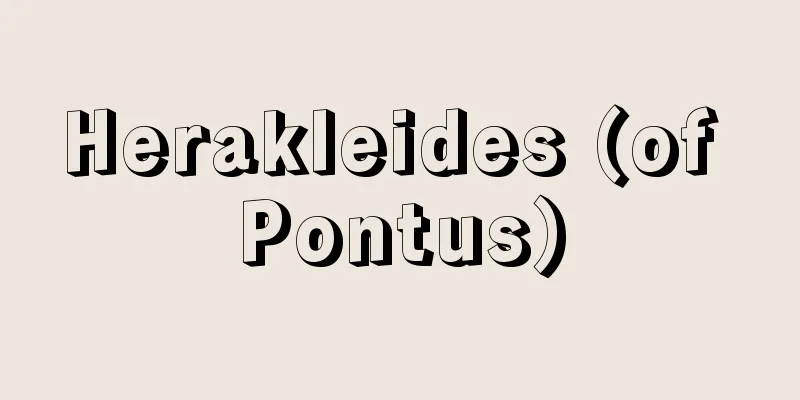

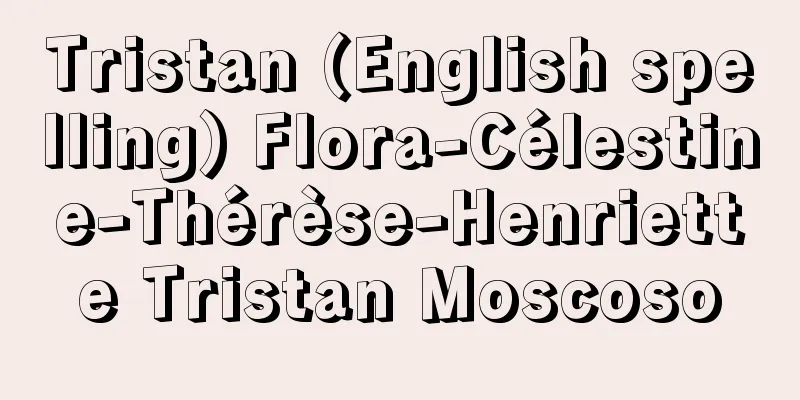
![Itadori [Village] - Itadori](/upload/images/67caebba7945e.webp)
